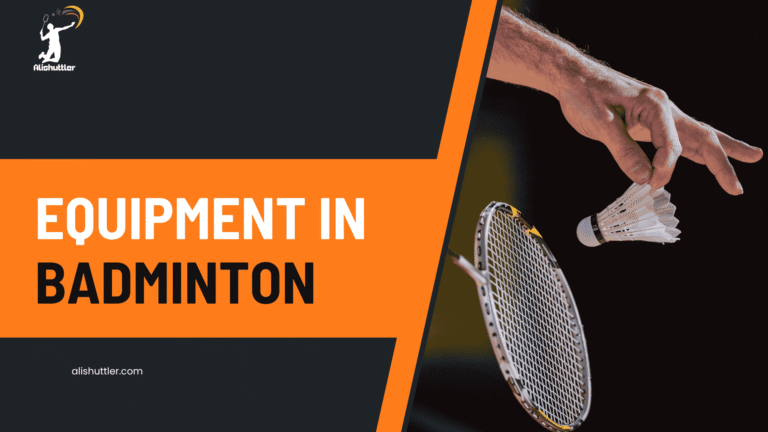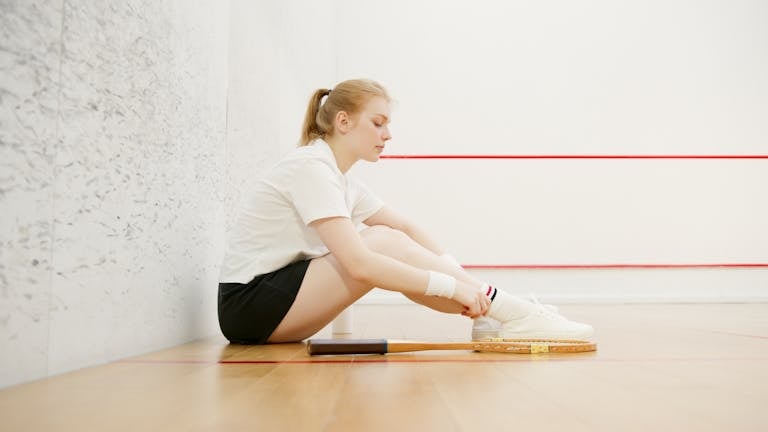Play badminton doubles with a weak partner requires adapting your game to your teammate. Most players face this challenge in recreational and league matches.
Clear calls, easy court schemes, and reliable encouragement help both players flow as a unit. Excellent teamwork can elevate a weaker player’s game and keep matches tight.
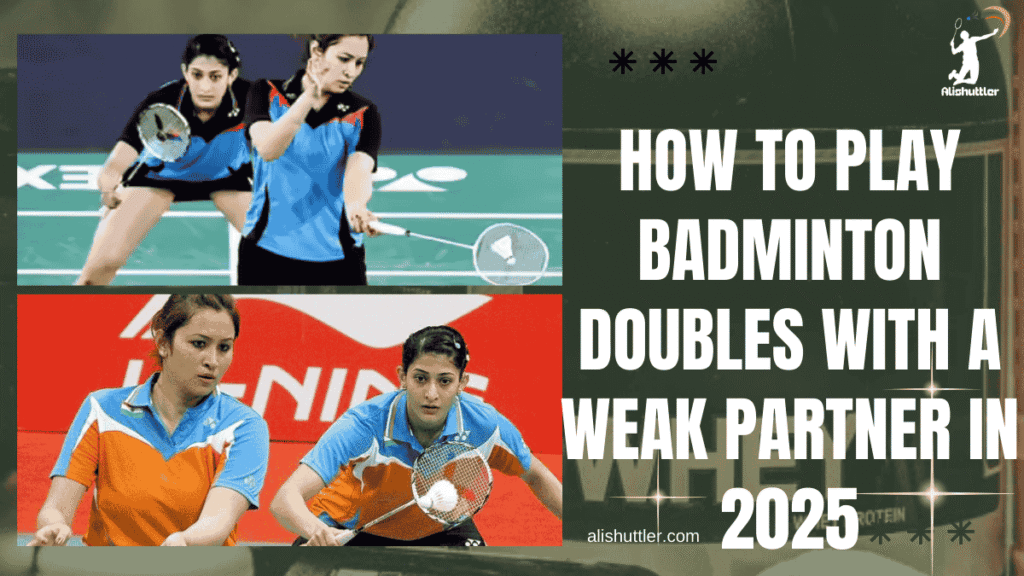
The following chapters demonstrate how to apply actual, simple measures for improved doubles performance.
Reframe Your Mindset
Badminton doubles with an inexperienced partner requires a complete rehabilitation of your mindset. Energize to create a positive atmosphere for both players, rather than for a victory. It aids to view doubles as a team sport, in which everyone has a stake in the result, regardless of ability.
Reframing your mindset and prioritizing the team effort can make the game more fun for all of you.
Your Role
Taking a leadership role can help orient your partner throughout the match. This doesn’t imply dictating each step, but establishing the rhythm and having clarity on the following shot or stance. When you reframe your style to play to your partner’s strengths, you craft a snappier game.
If your partner is better at net play, cover the backcourt and let them stay close to the net. Solicit your partner’s strategy input, particularly after points or during breaks. This way, it keeps them in the loop and makes your partner feel included.
Give it time. Your boyfriend could screw up or air-ball a layup. Let them take their own pace, and resist all frustration. As many expert players will attest, you should pay attention to what you’re doing, not try to manage your partner.
Their Growth
Appreciate small victories, such as a perfectly-placed serve or a winning rally. This bolsters your partner’s confidence and morale. On feedback, keep it constructive. Swap ‘Don’t miss’ for ‘Let’s aim a little higher next time’. Establish easy, clear goals together. For instance, generate 5 returns of serves in a row or hit every side of the court one time per rally. Monitoring these goals makes your advancement tangible.
Promote practice outside of matches. Even just a few minutes working on serves or footwork can make your partner more skilled, and as a result, you become a better team.
The Opponent
| Opponent Weaknesses | Opponent Strengths |
|---|---|
| Slow footwork | Strong smashes |
| Poor net coverage | Good serves |
| Weak backhand returns | Fast court movement |
Aim shots at your opponents’ vulnerabilities, such as hitting shuttles to their backhand or close to the net if there is a bad coverage. Discuss with your partner during the game what the other team is good at or where they may have difficulties.
This common consciousness allows you both to respond more effectively. Formulate strategies that accentuate your collective abilities. For instance, employ short serves to drag an opponent who struggles at the net, or cover extra court space if your partner is scrambling to regain position.
Strong speaking and transparent strategies assist in hiding deficiencies and constructing confidence.
On-Court Strategies
In badminton matches, having a weaker partner requires intelligent shots and a solid defensive formation to minimize errors. This translates into on-court strategies that allow both players to function as one, focusing on responses and controlling the pace of the game to enhance your chances of winning, even if one partner falters.
1. Court Coverage
Stand where you can cover the majority of the court yet still allow your partner to play their ground. A lot of guys attempt to cover three of the four corners, while their partner spies one. Don’t clutter your partner, that’s disorienting or even dangerous.
Maintain safe distance, and rotate depending on where the shuttle goes. If you notice an opening to cover a soft shot at the net – move in and close out the point. Eye the landing spot of the shuttle throughout — you’ll be prepared to assist when your partner misses or gets caught off guard.
2. Shot Selection
Choose shots that are easy for your partner to deal with. Long clears, drop shots and gentle lifts drag the game and reduce unforced errors. Avoid smashing or fast drives that may put your partner into a hard position.
Those first three shots in a rally are crucial—go for the quick point before the weaker partner even strikes the shuttle. Play some steady, controlled shots just to keep the rally going and let your partner gain confidence.
3. Service Strategy
So, mix up your serves. If you’re the stronger player, apply pressure using your serve or create setups for your partner. Be careful when you hit your first serve – it’s not about how fast you can swing.
Treat your partner to some serving practice, so he feels more confident. Don’t forget to design your service plan so your partner shines, not just you.
4. Communication Cues
Establish definite signals for when to switch spots or cover one another. Yell out when you’re going to attack or defend so your partner is aware of what’s approaching. Discuss between points what’s working and what’s not.
The aim is to establish trust so that you both feel comfortable exchanging advice or requesting assistance. Good teamwork begins with open, honest discussion.
5. Formation Fluidity
Experiment with front-and-back or side-by-side formations until you find what suits your duo. Be flexible and adapt as the match tempo shifts. Don’t forget to have both partners know their role, such as who’s going to cover the net and who’s going to cover the back.
Don’t be scared to wander and try new spots during the game. The proper setup can plug holes and maintain the balance of the match.
Elevate Your Game
Playing badminton doubles with a partner like yourself is the educational experience. It demands an adaptive style, as no two players play or think the same. The secret is to play as a unit, to concentrate on what you yourself are doing and to construct tactics that cover weakness. Covering more ground and making quick decisions can elevate your partner’s game as well as your own.
You must dictate the rhythm of rallies, but embrace that you’ll never have complete control. Winning requires both players to adjust, anticipate and bolster one another.
Anticipation
Game awareness is crucial in badminton matches. It allows you to anticipate where the shuttle is going to go, enhancing your reflexes and giving you the chance to execute intelligent shots. This is particularly important when your doubles partner is a bit slower on the draw. By discussing potential strategies before or during a match, you can create a strong defensive formation that helps both of you respond effectively.
Let practice sessions be the tool you use to build excitement and improve your court smash skills. For instance, practice basic drills guessing where the shuttle will land and get there as quickly as possible. This not only hones your craft but also assists your partner in returning shots faster.
As your play progresses, attempt to detect your opponents’ tendencies. Share these insights with your partner, and you’ll begin to catch some of the common patterns. The more you both learn to expect, the better you can defend the court together.
Stamina
Robust endurance keeps you keen from opening serve to match point. Include aerobic exercises like running, skipping or cycling to increase stamina. These assist you maintain the tempo, particularly when you need to cover more ground because of your partner’s deficiencies.
Take mini breaks between rallies to catch your breath and reset. This keeps your energy up throughout a match. Good hydration and balanced meals count. Eat primarily protein and complex carbohydrates to aid your muscles in recovering and provide long-lasting energy.
Get your partner on board with these habits. Routine drills for you both will make a difference.
Deception
Trick shots throw off competitors and provide you that crucial advantage. They work great when your squad is on the ropes or outgunned. During practice with your partner, mix up shot angles and speeds. This keeps your competitors on their toes and makes your next move less obvious.
Show your mate how to disguise shots, even the easy ones. For example, a soft wrist flick can appear as a hard smash. Throw in dummies, like feigning clear and then dumping the shuttle just over the net.
These easy hacks can create room and turn the rally in your advantage.
Drills for Skill Development
| Drill Name | Description | Impact on Skills |
|---|---|---|
| Shadow Footwork | Move to corners without shuttle | Boosts speed, builds stamina, improves court coverage |
| Anticipation Drill | Call out shuttle direction, react fast | Sharpens reading of play, betters reaction time |
| Deceptive Drop | Practice fakes near the net | Adds unpredictability, improves shot disguise |
| Doubles Rotation | Rotate roles during rallies | Builds teamwork, adapts to each other’s play |
Effective Communication
Smart communication is the foundation for any doubles team, but it’s particularly critical when one player is more novice than the other. It establishes trust, minimizes ambiguity, and assists in crafting a strategy that allows both players to rely on their strengths. Partners who communicate openly compensate for each other more effectively, adapt more quickly, and prevent the goofs that result in lost points.
It’s not just talk, but reading each other’s moves, when to step in, and when to give space.
Key points for an effective communication plan:
- Build trust by sharing honest feedback and showing patience
- Use clear, simple language for quick exchanges on court
- Focus on strengths, not just weaknesses, when assigning roles
- Adjust tactics together after each point or rally
- Encourage each other, especially after mistakes
- Review what worked and what didn’t after the match
Pre-Match
Before the opening serve, it’s a good idea to sit down as a team to discuss what’s in store. This includes targeting goals that correspond with each individual’s ability such as trying to maintain rallies or hitting to more accessible locations for the less capable player.
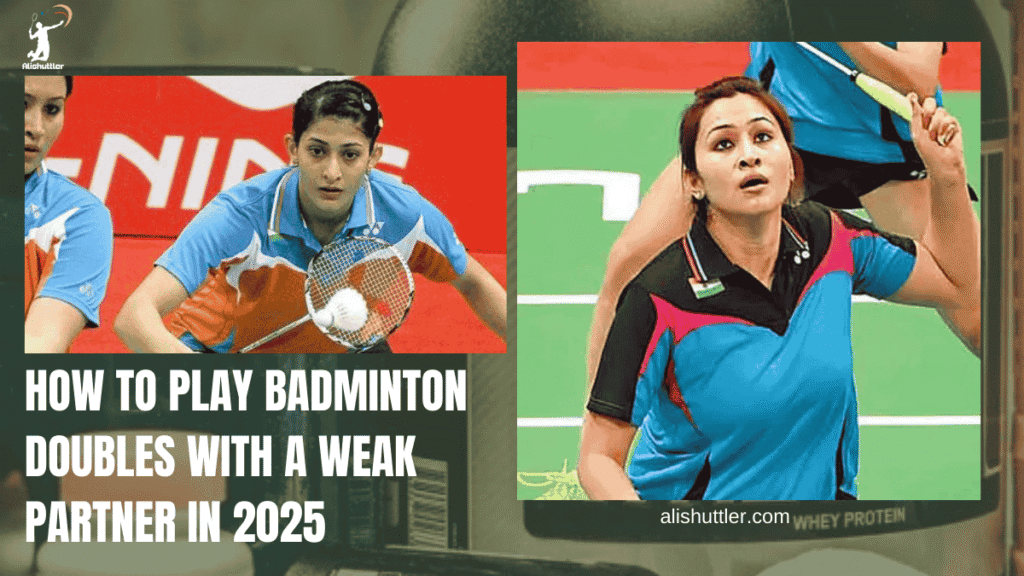
Go over strategies, like who’s going to man the net and who’s got backcourt, so both partners understand their responsibilities. This talk helps clear confusion before it even gets started and establishes a spirit of collaboration, not finger wagging.
Talking through potential challenges such as hard smashes or tricky serves allows both partners to brainstorm together how to handle tough points as a team. A positive mood sets both players to feel appreciated and prepared to play their best.
During-Rally
Quick signals, short words, are best on court. Say ‘mine’, ‘yours’, or ‘leave’, so that you both know who’s shooting what. Maintain a soothing voice, even if everything unravels.
This prevents pressure from building, particularly on the lesser partner. Indicate where you’ll advance or shoot, employing nods or hand gestures if necessary. Fast, positive reinforcement such as ‘good effort’ or ‘good hit’ provides immediate assurance to your teammate.
Gradually, the team will begin to anticipate one another’s moves, complementing and trailing, filling holes and shoring up vulnerabilities, seamlessly. OK, being flexible and adapting on the fly helps more than rigid plans.
Post-Mistake
If a partner errs, make your feedback positive and solution-oriented. Don’t play the blame game – talk about what to try next time, like switching court positions or shot selections. Consistently identify what went right, even in a lost rally, so confidence remains high.
If an error keeps recurring, discuss it after the rally or in-between games. Postedaçık yollara herkes dinlenmek için değil, kamp kurmak için gelir. This candid discussion fosters trust and prevents the team from getting bogged down in blame.
The Unspoken Partnership
A powerful partnership in badminton matches isn’t always a matter of talent. In doubles, the unspoken partnership is crucial for intelligent shots and effective court smash strategies. Safe play, trust, and shared goals enable both players to cover the court efficiently, without injuring or confusing each other.
Body Language
Body language is the primary means of demonstrating support when words cannot be exchanged during a game. A quick nod or clap after a good rally can buoy a partner’s spirits. Gestures that are negative—shaking your head, turning away—just serve to make a teammate feel worse and damage their confidence.
Even during quick rallies, momentary eye contact can ensure that two players can remain in sync, indicating intentions or preparedness. If your partner appears tense or stands too far back, it may indicate uncertainty, so intervene with a calm presence or welcoming gesture to provide reassurance.
Creative chemistry assists both players in traveling as one, sensing each other’s cues unspoken. As an example, after enough practice, a player will know when their partner is going to go for a smash or hang back for a lift just by the way they hold their racket or shift their weight. This unspoken cadence can keep both protected and dodge mid-court collisions.
Mutual Trust
Trust is what gives two people the ability to function as a doubles team, not a pair of singles players. It begins with consistent support—celebrating minor victories or shielding mistakes with no fault. Splitting the work on the court, as in side-out or serve rotation, demonstrates to both players that they are needed and worthy.
Candid discussions of what you have to cover or lend support on, like your stifling defense or his feeble backhand, create better collaboration. When both players feel secure enough to confess errors or request assistance, trust deepens further. Trust is something you earn.
Playing together frequently allows each player to feel the other’s tendencies, so it becomes easier to anticipate moves and avoid collisions. That’s key for safety and for smooth rallies.
Shared Goals
- Have set goals before every match, e.g. ‘lets play to enjoy’ or ‘defensive’.
- Go back to review these goals after each match and see what worked and what didn’t.
- Modify goals as you both get better, keeping them grounded and enjoyable.
- Celebrate advances—like a great rally or clever play—to maintain enthusiasm.
Training with the same goals in mind helps both players focus on intelligent shots and maintaining a strong defensive formation. This unity aids in keeping the emphasis on loving the game, even if victories are few and far between.
Long-Term Development
Long-term growth in Play Badminton Doubles with a Weak Partner doesn’t occur by accident. It requires consistent effort, honest communication, and a long-term development mentality. You play with a weaker partner, the path demands even more. It can challenge your talent, persistence and cooperativeness, but it can make you a more holistic competitor.
Dedicate yourself to practice. Training together establishes this trust and teaches you how you each move on the court. Simple drills, like switching off who covers the net or backcourt, can assist both players know their responsibilities. Working footwork and shot consistency as a team can fill skill gaps and build team rhythm.
When you play with a weaker partner, you may be covering more court or opting for safer shots. Over time this enables you to read the play better and make smarter decisions under pressure.
Solicit input from coaches or experienced players to direct progress. Neutral feedback assists identify avenues for improvement that you might overlook. For instance, a coach may observe a hole in your lateral coverage or recommend transitioning positions more seamlessly with your teammate.
Watching match videos together can assist. You’re able to pause and discuss what went right or wrong, allowing you both to view the game from a new perspective.
Define distant targets for your team to aspire to. Goals can be general, such as hitting the quarterfinals of a regional tournament in six months, or specific, such as increasing your serve accuracy by 10% in a season. Defined objectives keep you and your partner on track, even following hard contests.
They provide you with something to monitor, which makes advancement more transparent. Long-term objectives keep both players involved and striving for the same goal.
Take challenges as growth opportunities in your playing journey. Goofing around on a sissy partner can be hard, but it instills patience and flexibility. You learn to adjust your strategy in real-time, cover vulnerabilities, and play to your partner’s strengths.
For instance, if your partner has trouble with net play, you can take responsibility for the shorter shots, while they defend from behind. This necessity to adapt develops superior game sense and increases the team’s versatility.
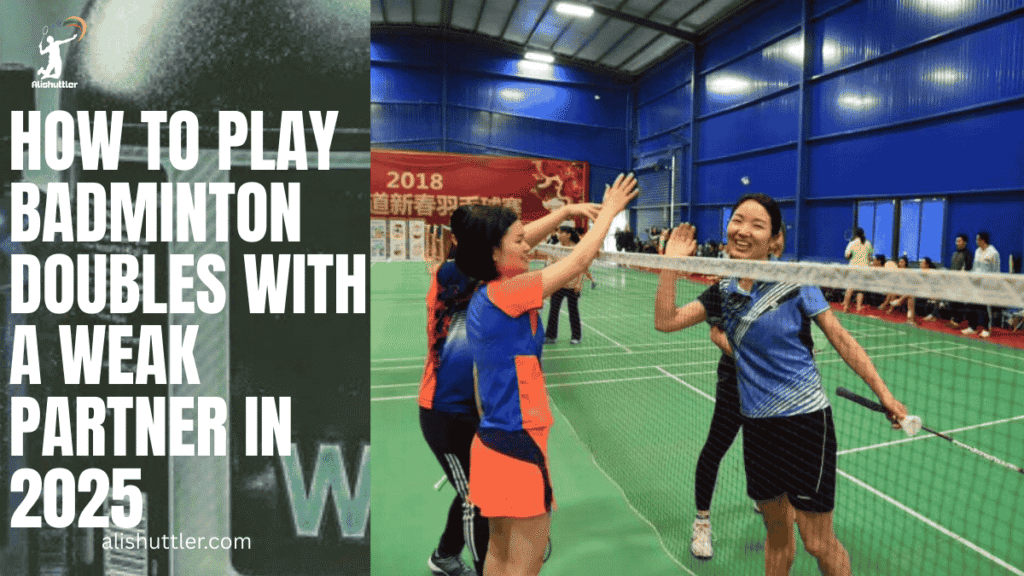
Players who use positive talk and respect, even when messing up, develop better team chemistry over the long run.
Final Thoughts on Play Badminton Doubles with a Weak Partner
5 easy smart moves to Play Badminton Doubles with a Weak Partner. Care in every rally. Back up your partner and cover the court with decisive calls. Keep chat short, use simple words, and have faith in one another on each shot. Develop abilities alongside, not only as players, but as a TRUE team. A sweet day on the courts beats a score.
It means laughs and little victories and new tricks learned in the process. All games offer an opportunity to learn and uplift one another. Next time you play, try these tips and watch your team become a single unit. Give us your own stories or suggestions below. Let’s not make this game no fun for none of us.
Frequently Asked Questions
How can I stay positive when playing doubles with a weaker partner?
Concentrate on collaboration and development with your doubles partner. Pep up your partner and focus on intelligent shots, as a good attitude makes both players better and enhances your chances of winning badminton matches.
What strategies help balance skill differences in Play Badminton Doubles with a Weak Partner?
Play off each other’s strengths by focusing on your formation for more court coverage and intelligent shots. Back up your doubles partner with dependable, high-percentage responses.
How do I communicate effectively with a less experienced partner?
Employ straightforward directives and gestures, focusing on intelligent shots and tips for your doubles partner.
Can I improve my own game while playing with a weaker partner?
Yes, you can work on being a leader and being consistent in badminton matches, which forces you to learn skills like court coverage and tactical responses.
How do I prevent frustration during the match?
Be reasonable in your expectations during badminton matches, focusing on improvement and intelligent shots, while remembering that both players are learning to control the situation.
What can I do off the court to help my partner improve?
Volunteer to train together in badminton matches, exchange tips, and provide encouragement. Motivate your doubles partner to practice intelligent shots at their own pace.
Is it possible to win matches with a skill gap in doubles?
Yes, with intelligent tactics and great cooperation, you can win badminton matches. Focus on consistency, communication, and utilizing each player’s strengths in your defensive formation.


